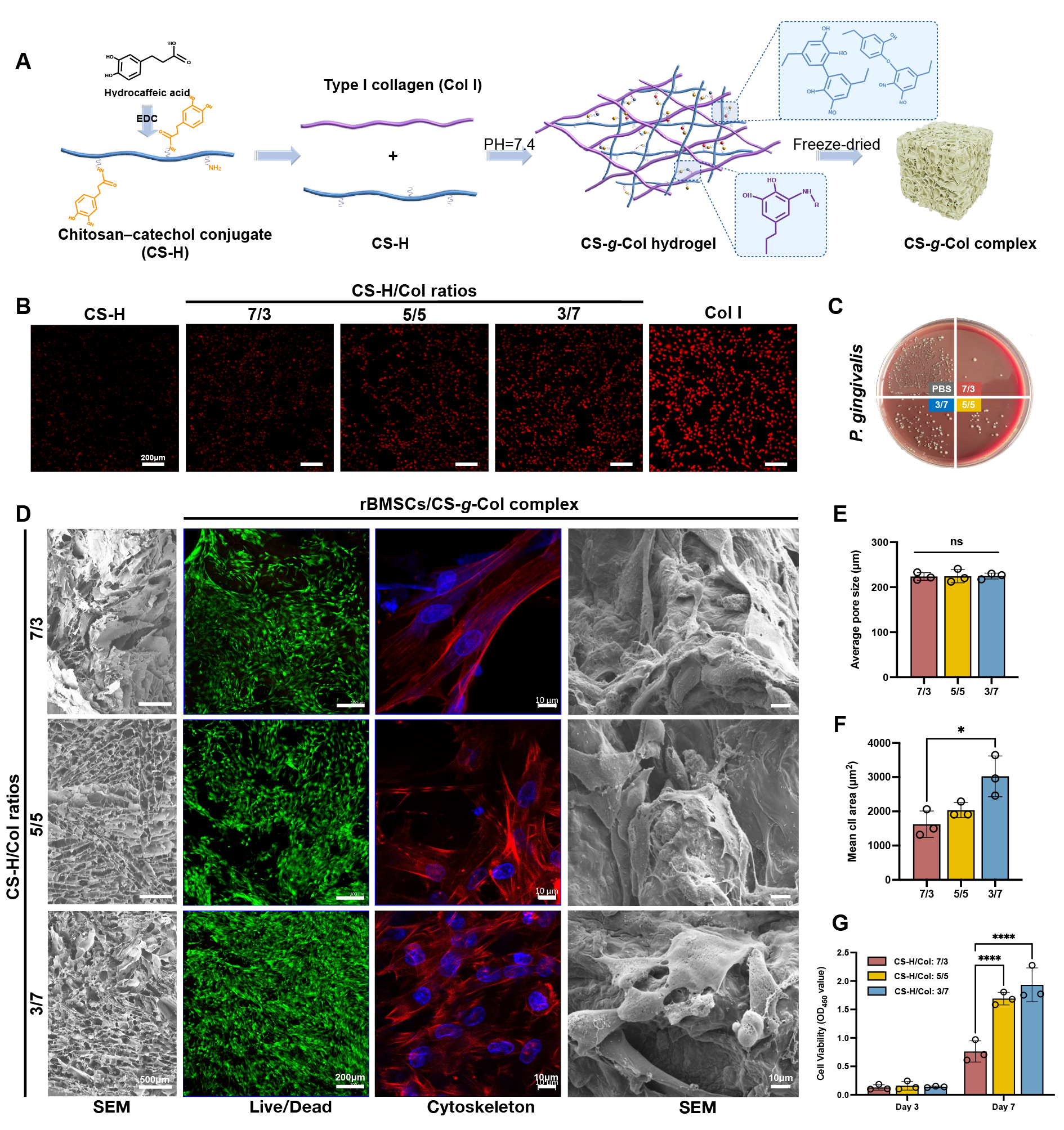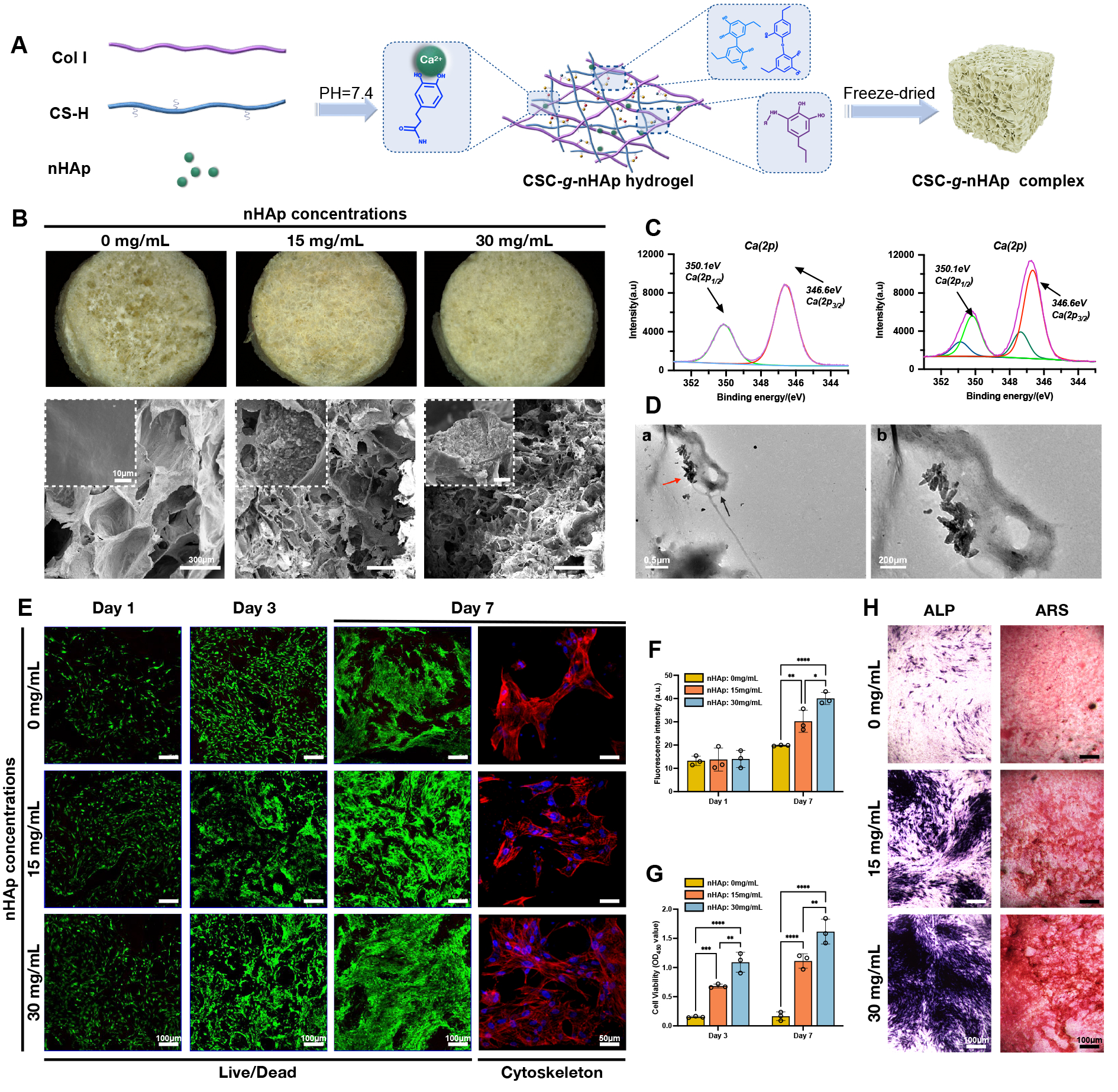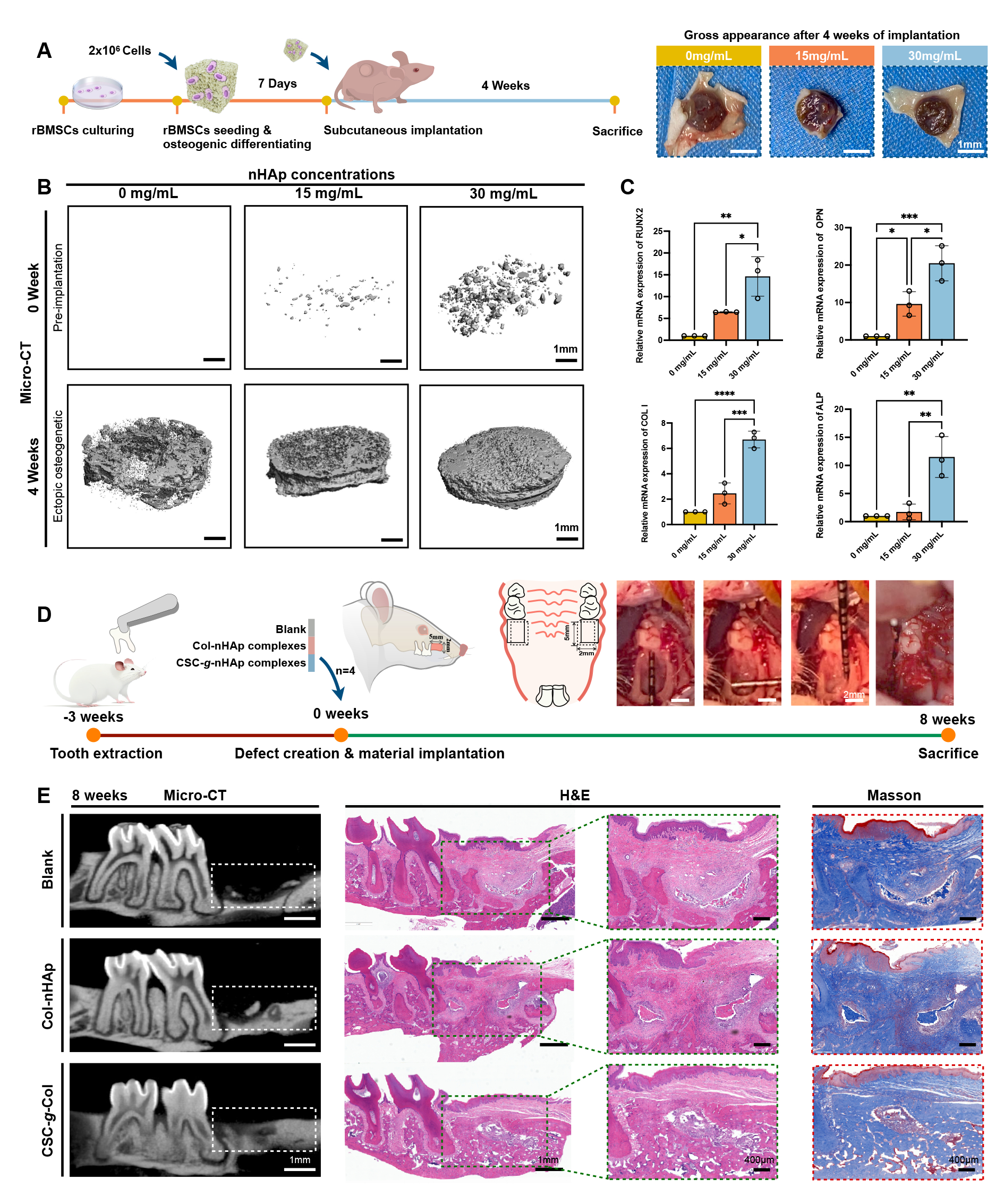IADR Abstract Archives
Cationic Chitosan-based Complexes of Chelating Nanohydroxyapatite for Periodontal Bone Regeneration
Objectives: The aim of this study is to fabricate a chitosan-based complex with antioxidant and cationic antibacterial abilities for periodontal bone regeneration.
Methods: Firstly, a favorite chitosan-catechol (CS-H)/collagen type I (Col I) mass ratio was filtrated by comparing the cytocompatibility, antibacterial and antioxidant activities of three groups of CS-H/Col I complex (CS-g-Col, CS-H/Col I mass ratio: 3/7, 5/5, and 7/3 wt%, n=3). Then, two groups of CSC-g-nHAp (nHAp concentrations: 15 and 30 mg/mL) were fabricated by CS-H chelating nanohydroxyapatite (nHAp) and binding Col I based on the filtrated CS-H/Col I mass ratio. Thereafter, the physicochemical properties, microstructure, cytocompatibility, and osteoinductive abilities of obtained CS-g-Col and CSC-g-nHAp were studied in vitro (n=3). Finally, the nude mice subcutaneous implantation model (n=6) and SD rat critical-sized periodontal bone defect model (n=4, depth×length×width: 2×5×2 mm3) were utilized to investigate the in vivoosteoinductive ability of CSC-g-nHAp. One-way analysis of variance (ANOVA) followed by Tukey post-hoc test was used to compare differences between groups.
Results: CSC-g-nHAp (CS-H/Col I: 5/5 wt%, nHAp concentration: 30 mg/mL) showed excellent cationic antibacterial activity, satisfied antioxidant ability, and great osteoinductive ability. This cationic complex mimics the nanostructure and composition of natural bone matrix to provide desirable microenvironments for stem cell migration and proliferation. It also presented a microenvironment-regulating ability due to the inherent antioxidant and cationic antibacterial activities of CS-H. More importantly, nude mice dorsal subcutaneous implantation demonstrated that CSC-g-nHAp promoted rat bone marrow mesenchymal stem cells osteogenic differentiation and induced significant biomimetic mineralization (BV=23.66±4.20mm3, BV/TV=40.78%±9.41%). Furthermore, after 8 weeks of implantation in rat critical-sized periodontal bone defect, 5.5-fold greater bone regeneration was observed in the CSC-g-nHAp group than in the untreated group (p<0.0001).
Conclusions: CSC-g-nHAp could regulate the microenvironment of bone defect areas through its synergistic antibacterial, antioxidant, and osteoconductive activities, is a promising bone substitute for periodontal regeneration.
Methods: Firstly, a favorite chitosan-catechol (CS-H)/collagen type I (Col I) mass ratio was filtrated by comparing the cytocompatibility, antibacterial and antioxidant activities of three groups of CS-H/Col I complex (CS-g-Col, CS-H/Col I mass ratio: 3/7, 5/5, and 7/3 wt%, n=3). Then, two groups of CSC-g-nHAp (nHAp concentrations: 15 and 30 mg/mL) were fabricated by CS-H chelating nanohydroxyapatite (nHAp) and binding Col I based on the filtrated CS-H/Col I mass ratio. Thereafter, the physicochemical properties, microstructure, cytocompatibility, and osteoinductive abilities of obtained CS-g-Col and CSC-g-nHAp were studied in vitro (n=3). Finally, the nude mice subcutaneous implantation model (n=6) and SD rat critical-sized periodontal bone defect model (n=4, depth×length×width: 2×5×2 mm3) were utilized to investigate the in vivoosteoinductive ability of CSC-g-nHAp. One-way analysis of variance (ANOVA) followed by Tukey post-hoc test was used to compare differences between groups.
Results: CSC-g-nHAp (CS-H/Col I: 5/5 wt%, nHAp concentration: 30 mg/mL) showed excellent cationic antibacterial activity, satisfied antioxidant ability, and great osteoinductive ability. This cationic complex mimics the nanostructure and composition of natural bone matrix to provide desirable microenvironments for stem cell migration and proliferation. It also presented a microenvironment-regulating ability due to the inherent antioxidant and cationic antibacterial activities of CS-H. More importantly, nude mice dorsal subcutaneous implantation demonstrated that CSC-g-nHAp promoted rat bone marrow mesenchymal stem cells osteogenic differentiation and induced significant biomimetic mineralization (BV=23.66±4.20mm3, BV/TV=40.78%±9.41%). Furthermore, after 8 weeks of implantation in rat critical-sized periodontal bone defect, 5.5-fold greater bone regeneration was observed in the CSC-g-nHAp group than in the untreated group (p<0.0001).
Conclusions: CSC-g-nHAp could regulate the microenvironment of bone defect areas through its synergistic antibacterial, antioxidant, and osteoconductive activities, is a promising bone substitute for periodontal regeneration.



